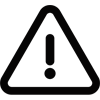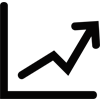The BGA Timor-Leste Team, led by Senior Adviser Amb. Ian Kemish, wrote an update to clients on the swearing-in of Timor-Leste’s new prime minister, Xanana Gusmao.
Context
- Xanana Gusmao, the charismatic independence figure and leader of the National Congress for Timorese Reconstruction (CNRT) party, was on July 1 inaugurated as Timor-Leste’s new prime minister. Gusmao, president from 2002-2007 and prime minister from 2007-2015, will once again take the reins of government. Timor-Leste’s May 21 election saw Gusmao’s party emerge with 31 of 65 seats in Parliament — just shy of the 33 seats required to govern with an outright majority. CNRT has since formed a ruling coalition with the Democratic Party, which won six seats in the parliamentary elections.
- The election result was partly a reflection of the population’s dissatisfaction with the former government, which had failed to improve the country’s economic prospects and was the source of much political turbulence over the past five years. Gusmao’s defeat of longtime rival Mari Alkatiri, leader of the Revolutionary Front for an Independent East Timor (FRETILIN) and return as prime minister were not unexpected given the fluidity of Timorese politics and his enduring appeal with voters.
Significance
- Gusmao campaigned on tackling the country’s high poverty and inequality levels and securing its economic future by developing the Greater Sunrise oil and gas processing project. He has advocated for processing the project’s liquified natural gas via the Tasi Mane onshore gas-processing facility. Timor-Leste is at a critical inflection point, with its economic viability resting on its ability to kick-start the project while diversifying its economy away from an overreliance on the country’s dwindling petroleum fund. Developing the gas requires foreign investment, which is tight given escalating geostrategic competition in the Indo-Pacific. Ramos-Horta stirred fears in Australia last year with comments that he would turn to China as a partner if negotiations do not play out favorably for Timor-Leste.
- The election was once again dominated by Timor-Leste’s independence-era politicians, but their time in the spotlight could be nearing its end. Around 65 percent of Timor-Leste’s population is under 35, and there are calls for a new generation of political leaders to represent the country’s demographic shift.
Implications
- The Democratic Party claims to represent younger voters in the country. This is significant given Timor-Leste’s large youth population, which is calling for change and greater representation. Sabino was a key player in the student movement during the independence era, and at 48 is much younger than Gusmao, 77; Ramos-Horta, 73; Alkatiri, 73; and the other prominent independence figures dominating Timor-Leste’s political landscape. He will therefore likely represent a new generation of leaders for the young democracy.
- The main priority of Gusmao’s coalition government will be to address Timor-Leste’s significant economic challenges. At his swearing-in ceremony, Gusmao said, “I promise to carry out the tasks that the people have entrusted to me and to bring prosperity to the Timorese people through government programs.” Around 42 percent of the population lives below the poverty line. The country has the lowest labor force participation in Asia, its infrastructure deficit is large and the delivery of services is weak. The economy is almost entirely reliant on the national petroleum fund, which is expected to run out by 2030.
We will continue to keep you updated on developments in Timor-Leste as they occur. If you have any comments or questions, please contact BGA Senior Adviser Amb. Ian Kemish at ikemish@bowergroupasia.com.
Best regards,
BGA Timor-Leste Team


























